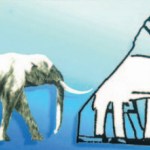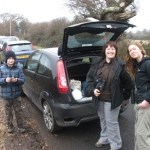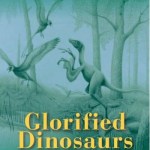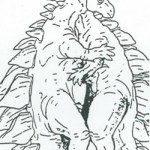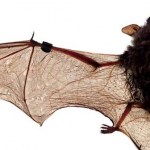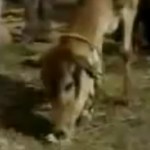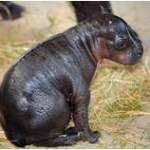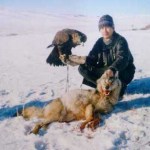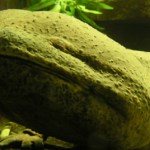Life Sciences
I really enjoyed the long and involved debate that followed my article on the small elephant depicted on the wall of Rekhmire's tomb. Thank you to (just about) everyone who contributed. As I tried to make clear in the actual article, we'll likely never know the truth of the matter, and this whole exercise should be seen as a bit of fun speculation [image below © Alessando Mangione and Marco Masseti].
Those of you who argued that the elephant could likely be stylized, or an inaccurate rendition of either an adult or juvenile Asian elephant Elephas maximus, could well be right. But, equally…
Welcome to part II of my musings on the 2010 blogging year. You'll need to have read the first part to make sense of it. The article you're reading now is extraordinarily long and I'd normally break up a piece of this length into two, three or even more separate articles. This year I want to get the birthday stuff out of the way as quickly as possible, however, so bear with me. Hey, you don't HAVE to read any of it. And so, off we go...
One of the bigger Tet Zoo-relevant issues of the year was the publication in September of Tetrapod Zoology Book One (Naish 2010a). Already I've seen several…
Today, my friends, is January 21st 2011. Do you know what this means? It means (drumroll)... that Tet Zoo is five years old today. Wow. Five years. With apologies to those who've heard the story before, things started in 2006 over at blogspot, and in 2007 Tet Zoo ver 2 kicked off here on ScienceBlogs. So: happy birthday Tet Zoo!
The fact that I've now been blogging about hardcore zoology for five years is a little scary; it makes me worried that things here might have become stale or blasé. To be honest, if that's so I haven't noticed and, anyway, my motivations for blogging are almost…
When I was a child, I picked up a book called Last Chance to See. You've probably heard of the author - he's world renowned for his humorous science fiction which has secured his place in the hearts of geeks everywhere. But this book wasn't about travelling the universe with a trusted towel; it wasn't even fiction. It was the true story of what happens when you drag a witty, intelligent writer around with a nerdy biologist to encounter species on the brink of extinction.
Douglas Adams did more than just recount his travels around the world with Mark Carwardine. He brought conservation to…
One of the things that came up in the many comments appended to the article on Bob's painting of extinct Maltese animals was the famous Egyptian tomb painting of the 'pygmy mammoth'. You're likely already familiar with this (now well known) case: here's the image, as it appears on the beautifully decorated tomb wall of Rekhmire, 'Governor of the Town' of Thebes, and vizier of Egypt during the reigns of Tuthmose III and Amenhotep II (c. 1479 to 1401 BCE) during the XVIII dynasty...
In 1994, Baruch Rosen published a brief article in Nature in which he drew attention to the small, tusked,…
Being able to count may be innate to many species. An article in New Scientist featured 8 amazing animals that are able to count or distinguish between ratios. Here are their stories:
Red-backed salamanders: Dr. Claudie Uller at the University of Essex, UK tested the counting ability of these amphibians in Louisiana. The animals were able to pick out tubes containing 1, 2, or 3 flies but could not tell the difference between 3 and 4 flies. If the ratio of flies in each tube was greater than 2 to 1, they could also discriminate up to 16 flies in each tube.
Newborn chicks: Rosa Rugani and…
The big buzz here in Hampshire (southern England) at the moment is the recent arrival of a White-tailed eagle Haliaeetus albicilla. This magnificent raptor - it can have a wingspan of 2.4 m and is one of the biggest eagles in the world - is historically extinct in England, but individuals still appear here on occasion [image of the Hampshire bird shown here by Darren Crain].
A member of the 'sea eagle' clade Haliaeetus, the White-tailed eagle appears to be the sister-species of North America's only sea eagle, the Bald eagle H. leucocephalus (Wink et al. 1996, Lerner & Mindell 2005).…
I read a lot of books in 2010, and mostly enjoyed all of them. Among my favourites was Luis Chiappe's Glorified Dinosaurs: The Origin and Early Evolution of Birds, and in the lengthy review article below (currently in press for Historical Biology) you can find what I thought of it. Note that Glorified Dinosaurs is not especially new (it appeared in 2007): it typically takes a few years for lengthy written reviews of large books to see completion (or, ha, it does in my case anyway).
One more thing to note: some of what I say here (e.g., about the relationship between birds and other…
Time to wrap up on the SJG special - make sure you see part I and part II first. Wow, I never thought I'd end up writing three long articles on this series of papers (hmm, a familiar theme). In the previous articles we looked at stegosaur systematics, and at Heinrich Mallison's work on the ranges of movement and posture of Kentrosaurus. This time round, we look at the papers that discuss preserved soft tissues, the possible role of the plates, and on feeding behaviour. Oh, and we finish up by looking at some other stuff too...
As I said before, the papers I'm discussing here appeared last…
After reading the article on the decimation of bat populations in North America, that was the subject of my previous entry, I wanted to learn more about these incredible flying mammals. There is actually a whole website called Bat Web dedicated to the understanding of bats where you can watch a video presented by John O. Whitaker at Indiana State University on just how amazing bats are.
Perhaps the most intriguing aspect of bats is their ability to echolocate while simultaneously hunting prey. To find out more about how the brains of bats process sounds, I read a press release from The…
Many of you have probably been following the news on the recent deaths of thousands of blackbirds in Arkansas that have, so far, been attributed to confusion brought on by local fireworks causing the birds to fly into objects. You are probably also aware of the mysterious deaths of more birds in Lousiana just a few days after the Arkansas incident. The underlying cause of these mass deaths is under investigation since tests of the carcasses for potential toxins or diseases are still underway.
Equally mysterious are the deaths of numerous fish in Arkansas, Maryland, Brazil, and New Zealand…
A discussion of misconceptions in evolution ... about missing links, or great chains of being, or teleology (the idea that evolution is goal-directed) has got to be the most fun you can have with your pants on. Pursuant to this, let's sharpen and clarify our evolutionary theory mojo by considering the concept of "mosaic evolution" ... what is it, and what isn't it?
Of course, the concept of mosaic evolution, meant to clarify how evolution works, is often itself misunderstood. From Wikipedia:
"Mosaic Evolution is the concept that major evolutionary changes tend to take place in stages, not…
Today's falsehood1 is the idea of "The Missing Link." You've heard about The Missing Link. You'll hear that some palaeontologist has discovered something and they tell us it is "The Missing Link." Often, it is a supposed "link" between some ancestor of humans (a fossil ape, a monkey, whatever) and us humans. And often, you'll also find that when the press reports a "missing link" the science blogosphere erupts with a torrent flowing over the phrase and the concept, about how there really is no such thing as "The Missing Link," or that this particular report of such a link is spurious, or…
Via Sandwalk, this is a clip of Paul Nelson praising Jonathan Wells and his godawful gemisch of bad scholarship and lies, Icons of Evolution. They were making a big to-do over the ten-year anniversary of publication of this ghastly hackwork, and here Nelson is piously praising the premise.
It's infuriatingly dishonest. Notice what he repeats over and over: the textbooks "diverge from the actual evidence," they're "out of touch with the actual evidence," we "need to take these standard stories back to the evidence." This, from the Discovery Institute, a propaganda mill with no evidence for…
People often send me links to stories of the Indian cow that took to eating baby chickens. The story isn't at all new: it appeared in the press in March 2007, and at least one of the cow's lapses into carnivory was filmed. It's shown here (though see below). As with the epic cat fight, do NOT watch this video if you are easily disturbed or upset by scenes of animal death and suffering. I will spoil the surprise by telling you that the cute little baby chicken gets eaten alive by the big nasty cow.
The cow concerned - named Lal - lives in Chandpur, West Bengal (though: the cow in this video…
OK, Pygmy Hippos are really cute. Well, baby pygmy hippos are really cute. And that's kind of strange considering it looks like the morph of a pig and a hippo. I mean, piglets are cute, but grown pigs are certainly not the easiest thing on the eyes. And hippos, well, they're just odd looking. But the pygmy hippo got the best of both worlds, and they are really interesting creatures when you take a look at their adaptations.
Just take a look at the photo above of a pygmy hippo that was born just last month at Zoo Miami. She doesn't have a name yet, but zookeepers are doing an online poll to…
You know that age-old argument dog people and cat people can't ever seem to agree on? The one about whether dogs or cats are smarter? Well, we may finally have an answer! (Spoiler alert: I'm pretty stoked, as a dog person.) According to a new study by Oxford University, researchers have discovered extreme differences in how the brains of different mammals have evolved over time. The study notes there is a link between the level of social interaction of mammals and the size of their brain relative to their body size.
Lead author Dr. Susanne Shultz said, "Cooperation and coordination for…
We live in an age where truth is, if not stranger than fiction, then at least equally strange. Sometimes pop-science books illustrate this point with particular well-researched glee and Packing for Mars: The Curious Science of Life in the Void is such a book.
Where do I begin? It's a true nerd's smorgasbord. It answers all the scatological and emotional questions that kids always imprudently ask astronauts. It acknowledges the humanness of space travel as a venture: that astronauts are people who must eat, pass gas, have sex, take up space, sweat, sleep, fear, and otherwise learn to be…
No time for anything new (err, just a tad busy at the moment), so here's something else from the Tet Zoo archives. This article originally appeared on ver 1 in April 2006 and appears here in slightly modified form.
In previous articles we've looked at the ability of large eagles - the Golden eagle Aquila chrysaetos in particular - to kill surprisingly large prey. As in adult pronghorn, adult reindeer, juvenile red deer and juvenile domestic cattle etc. (see links below, or Cooper (1969), Deblinger & Alldredge (1996) and Nybakk et al. (1999)). Such behaviour isn't unique to Golden eagles…
Aww, look at that cute little face, those piggy little, opaque eyes, that wrinkled skin. I just know that you want a little refresher on giant salamanders, so - accompanied with new photos taken at the SMNK in Karlsruhe (by Markus Bühler; thanks) - here's a substantially augmented chunk of text that originally appeared here back in January 2008...
Giant salamanders (or cryptobranchids) are grouped with hynobiids (Asiatic salamanders) in the clade Cryptobranchoidea (or Cryptobranchiformes). There are only three extant species: the North American Hellbender Cryptobranchus alleganiensis, the…
